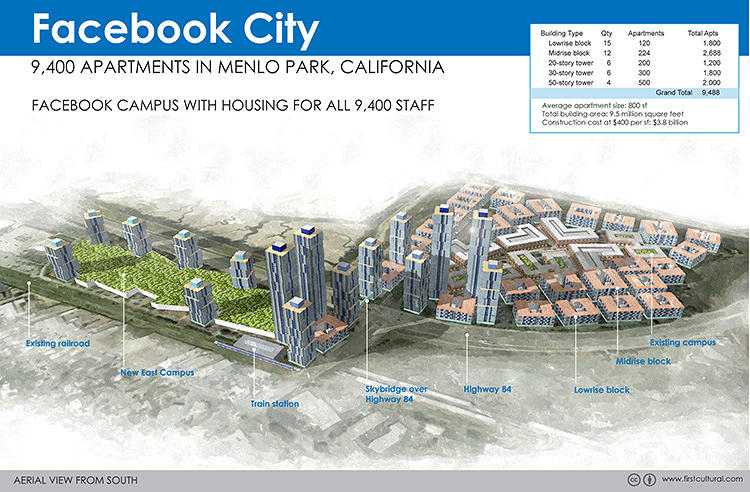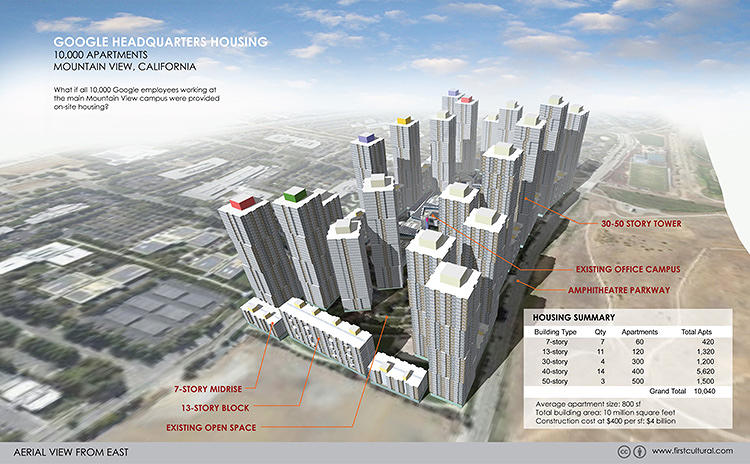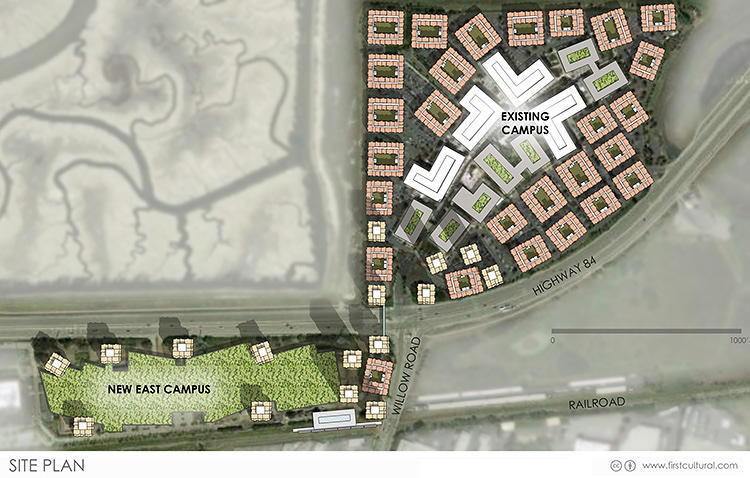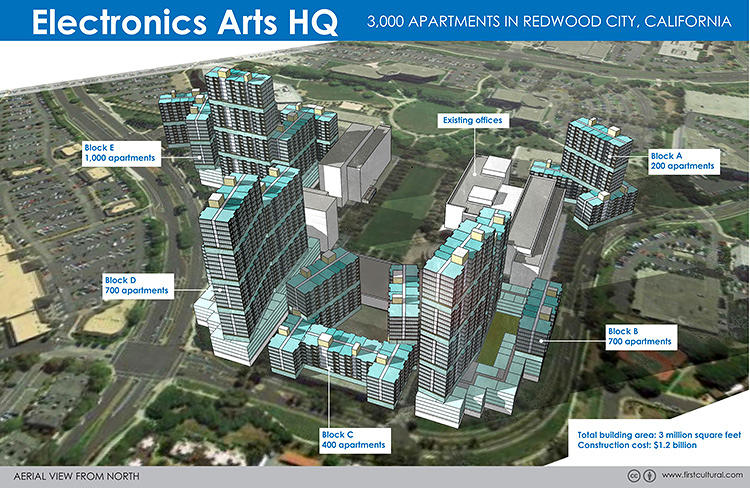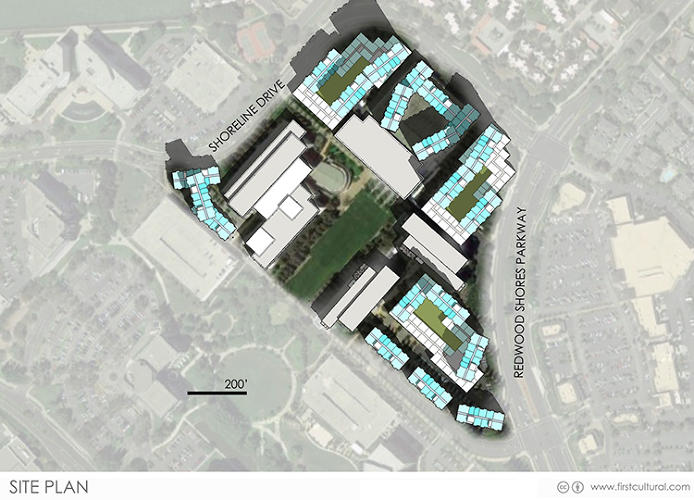Welcome to i-Town. An artist imagines Google, Facebook, Apple, and Electronic Arts as self-contained urban hubs.
From our partners:
Calm down, everybody. There’s no longer any need to hate on Google shuttle riders for fear that they are draining the city’s public resources. Mad about being banished to the edge of the city because of rising rents? That’s okay. You won’t have to move to Bakersfield just yet. That’s because future has an answer—one that was under our noses the whole time. Or parked cars, rather.
Artist Alfred Twu, the Bay Area graphic designer behind this popular imagining of a cross-country high-speed rail map, has created a series of renderings showing what Silicon Valley tech campuses might look like if their parking lots could house the thousands of their controversial employees. Not only has he envisioned new campuses for Google, Apple, Facebook, and Electronic Arts, but he’s also created with a “generic café/startup/coworking space” to serve as a model for smaller startups, too.
“The booming tech industry has created huge demand for housing in the San Francisco Bay Area, driving up housing costs and leading to long commutes. Meanwhile, tech workers flock to San Francisco and Oakland, seeking the high-density urban environment that Silicon Valley lacks,” Twu writes. “What might it look like if tech campuses replaced their parking lots and provided all the necessary housing on-site?”
Twu’s visions draw from a well of ongoing trends. Bruce Katz, head of the Brookings Institution’s Metropolitan Policy Program, has suggested that instead of housing tech campuses in suburban areas, the next several years will see the tech economy give rise to “innovation districts,” a new kind of urban neighborhood where clusters of research universities, tech firms, housing, and amenities meet all the needs of those employees. It’s already happening, to some degree. Take Sao Paulo’s Vila Olimpia neighborhood, for example, which will see a building full of 173-square-foot micro-apartments rise in 2016, largely to serve employees of Google, Intel, Microsoft, and Unilever.
But while San Francisco grapples with its housing supply and demand, Twu believes that the pressure could simply be relieved by another Bay Area city. “I was thinking about what exactly are the things in San Francisco that attract people who have jobs 50 miles away and go back and forth every day,” Twu tells Co.Exist. “And part of it’s just being around other people, being around different stores and restaurants.”
He’s not the first to suggest that Silicon Valley fashion itself into more of a self-contained urban center. After Steve Jobs presented the Apple campus’ new ring shape to the Cupertino City Council in 2011, Israeli architect Hillel Schocken drafted up an idea that gave the territory a walkable city grid.
Twu, who lives in Berkeley, also imagines bike paths, pedestrians, and an average apartment size of 800 square feet. Not too shabby. But Twu also acknowledges that residential buildings of that scale wouldn’t be feasible under current zoning conditions in the suburbs. An effort to make a real iTown would require some political will.
And perhaps that’s where the idea requires more forethought. There’s something deeply unsettling about the idea of self-contained tech cities siphoned off from the hubs we already know and love. Just as gentrification can bring a whole host of knotty, difficult issues to consider, would “tech flight” create a new kind of economic segregation?
“I think that’s definitely a very real possibility,” Twu says. “But at this stage it’s probably the lesser of two evils.”
It’s certainly appealing in the short term. But before we start building satellite cities wholly dependent on a handful of companies’ bottom lines, perhaps it’s just as prudent to engage in those bitter protests, move through the arguments, and find better ways to maintain a city’s diversity.
This feature is adopted from FastCoExist and Sydney Brownstone.









